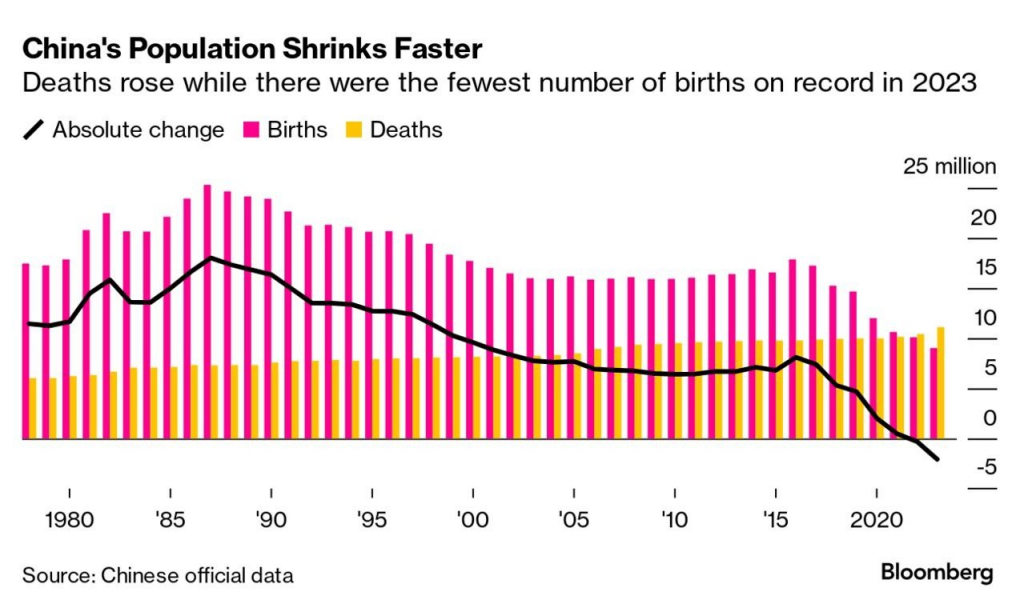The global economic landscape is constantly evolving, with power dynamics shifting among nations. For the past few decades, China has been at the forefront of economic growth and development. However, recent data points towards a potential power shift towards India. Analysts are now turning their attention to India, recognizing the country’s potential for incremental growth.
One of the key factors contributing to this shift is India’s demographic advantage. A closer look at the data reveals a clear distinction between the population trends of China and India. While the Chinese population is experiencing a rise in deaths and a decline in births, India is witnessing the opposite trend. This significant data point is crucial in confirming the shift of power towards India.

Looking at a chart depicting these population trends, the orange bars represent the number of deaths, while the pink bars represent the number of births. For the first time in the last five decades, births in China have fallen below deaths, resulting in net negative population growth. This trend is expected to rapidly accelerate in the next two decades.
On the other hand, India’s peak, in terms of population growth, may come later, possibly after two decades. It’s important to note that these demographic changes are long-term trends that won’t alter overnight. However, this shift presents a tremendous opportunity for India and is seen as a positive factor for the country’s future growth.
Of course, the outcome will depend on various factors, including policies implemented and the kind of government that comes into power. Nevertheless, the foundation for India’s growth, fueled by its abundant human resources, remains intact. International companies and organizations recognize this potential advantage, acknowledging that the next few decades might witness a slower China and a potentially thriving India, assuming India can seize the opportunity effectively.
The data supporting this shift in power acts as fuel for optimism and confidence in India’s economic prospects. It is anticipated that India will attract an increasing amount of Foreign Direct Investment (FDI) throughout this decade if the political regime remains stable. Additionally, market projections suggest that the second half of this decade will see significant price adjustments, with expectations being priced in by 2025.
As a result, there may be a substantial influx of capital into India’s economy, requiring an adequate supply of investment opportunities. Failure to meet this demand could result in an inflated market, with limited supply pushing stock prices higher. Absolute valuation becomes less relevant as relative valuation takes the spotlight.
Comparing India’s valuation to that of China, it is evident that India already stands at a higher level. However, the United States surpasses both nations in terms of valuation. The key focus now lies in the ability to absorb liquidity swiftly and create capacities to meet the rising demand. Established players in the market must be prepared to step forward and offer investment avenues to potential stock buyers.
Glimpsing into the future, it appears to be a golden period for India. However, it is crucial to approach these projections with cautious optimism. While the data points towards a potential power shift, there are external variables that can significantly impact the outcome. Nonetheless, these data points present essential insights that should be examined and absorbed for a comprehensive understanding of the existing economic landscape.

If you have any questions, please write to support@weekendinvesting.com









